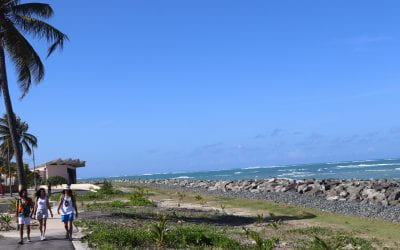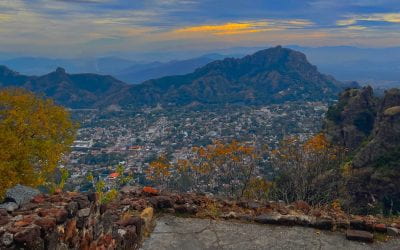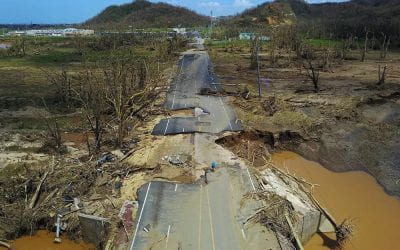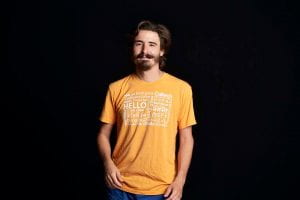
About the Author
Eduardo da Veiga Beltrame is a fourth year PhD student in the bioengineering program at Caltech, with a research focus on bioinformatics and single cell RNA sequencing. He grew up in Floripa and started undergraduate studies there before transferring to Brandeis university and majoring in biophysics in 2016. He likes 3D printing, science, startups, international politics and cachaça. His website is https://munfred.com
A Beacon of Hope for Brazil in a Pandemic Year
“Paul, can I go back to my hometown and work from there?”
“Yeah, it’s a good idea to be near family right now.”
“Also, can I take the 27″ iMac?”
Such was the exchange I had with my Ph.D. advisor, Paul Sternberg, on that fateful week in March 2020, when it felt like the entire world was going to collapse. On Tuesday the 10th, everything seemed normal. By Friday, the Caltech campus was on total lockdown; by the following Wednesday, I was flying back to my hometown of Florianópolis (or Floripa, as we call it), lugging a two-hundred-pound suitcase, relieved that I was able to fly out before further flights were canceled.
I was born, grew up and started undergraduate studies in Floripa, but after an exchange program, I transferred to Brandeis University in Massachusetts, majoring in biophysics, before starting graduate school at Caltech. I had been away from Brazil for four years and had mostly been too engrossed in my studies to really look back.
But if the world was going to end, I reasoned, I would much rather be in an environment where people are used to shrugging off or making a joke about unavoidable calamity, rather than in one where the norm is to obsess and worry about things one cannot change.
With a research focus on computational biology, I was among the lucky graduate students who could work from home without it significantly affecting my research. What I had thought would be a few months in Brazil turned into a year, now embedded in a reality I had not seriously contemplated in years, one marked, above all, by inequality.
As the pandemic unfolded, I found myself in Floripa, struck by the immediate and historical realities that Brazil and the United States share—inequality, lockdowns, wildfires, erratic presidents—and, above all, the crippling anxiety and insecurity being brought to bear as people’s livelihoods were ravaged. Every day, as I enjoyed my anxiety-free pandemic isolation (courtesy of the Caltech graduate student stipend, which in Brazil puts me in the top 2% of income earners), I would think to myself how extremely unfair the world is.

Panoramic view showing the city center of Floripa, the bridges connecting the island to the continent, and the Monte Serrat hill (center left) where Vilson Groh lives and acts. Photo credit: Beatriz da Veiga Beltrame
Floripa is a beautiful coastal city, an island, connected to the continent by three half-mile bridges, with about half a million people on the island itself and another million in the surrounding urban region. It is the capital of the Brazilian state of Santa Catarina, but it spent most of its history as a fishing village. Development and urbanization only started accelerating in the last half century, followed by all the problems that are endemic to every Brazilian city: disorganized urbanization, violence, crime, and the marginalization of the bottom part of society.
Before the pandemic, one quarter of Brazil’s population—51 million people—was living below the World Bank-defined poverty line of $1.90 per day. The problems of Floripa are those of other Brazilian cities, albeit on a smaller scale. I have described it to friends as a miniature version of Rio de Janeiro, a city where almost 1.5 million people live in hillside favelas, or three times the population of Floripa; in my hometown, the equivalent figure is 50,000, thirty times less. Floripa’s problems certainly feel more manageable. It can be a useful testing ground for social projects, requiring fewer resources and social coordination than in other cities.
What could I actually do? Was there any particularly effective way to leverage my position as a graduate student in the United States? Brazil’s tantalizing promise and squandered human potential have taunted and frustrated the nation for generations, much to the chagrin of reform-minded leaders—something former Brazilian President Fernando Henrique Cardoso chronicled in his memoir, The Accidental President of Brazil.
Eventually I found an opportunity to make an impact, which seemed so good I initially had trouble believing it—after all, effective solutions to social problems are not something we are used to seeing in Brazil every day.
The Vilson Groh Institute
More than forty years ago, in 1978, a young man called Vilson Groh moved from the town of Brusque, in the interior of Santa Catarina, to Floripa to study theology. During his first few years he was taken in by a black woman and practitioner of Umbanda, an Afro-Brazilian syncretic religion, in the Mocotó Hill favela. At the time, the community had no running water (people relied on wells), paved roads or any basic public infrastructure. The two quickly became friends and joined forces to improve the community and demand basic rights from a state that was completely absent. This experience deeply impressed upon Groh the plight faced by marginalized communities and the essential role of women as leaders in them.
After being ordained a Catholic priest in 1983, Groh moved to the community in the nearby hill of Monte Serrat and continued to work for social justice there. Supported by the infrastructure of an initially hesitant Catholic church—one unused to a priest congregating different faiths together—he worked to bring hope and real change to the favela. The involved the creation of the area’s first youth shelter, serving the children of vulnerable local families. Then came a cultural center, an education center, partnerships with two elementary schools, and two more community hubs. To coordinate this organic growth, in 2011 the Vilson Groh Institute was formed to serve as the institutional hub for eight separate organizations. The Vilson Groh Institute now reaches more than 5,000 young people and 2,000 families, boasting almost 400 volunteers in 2019.
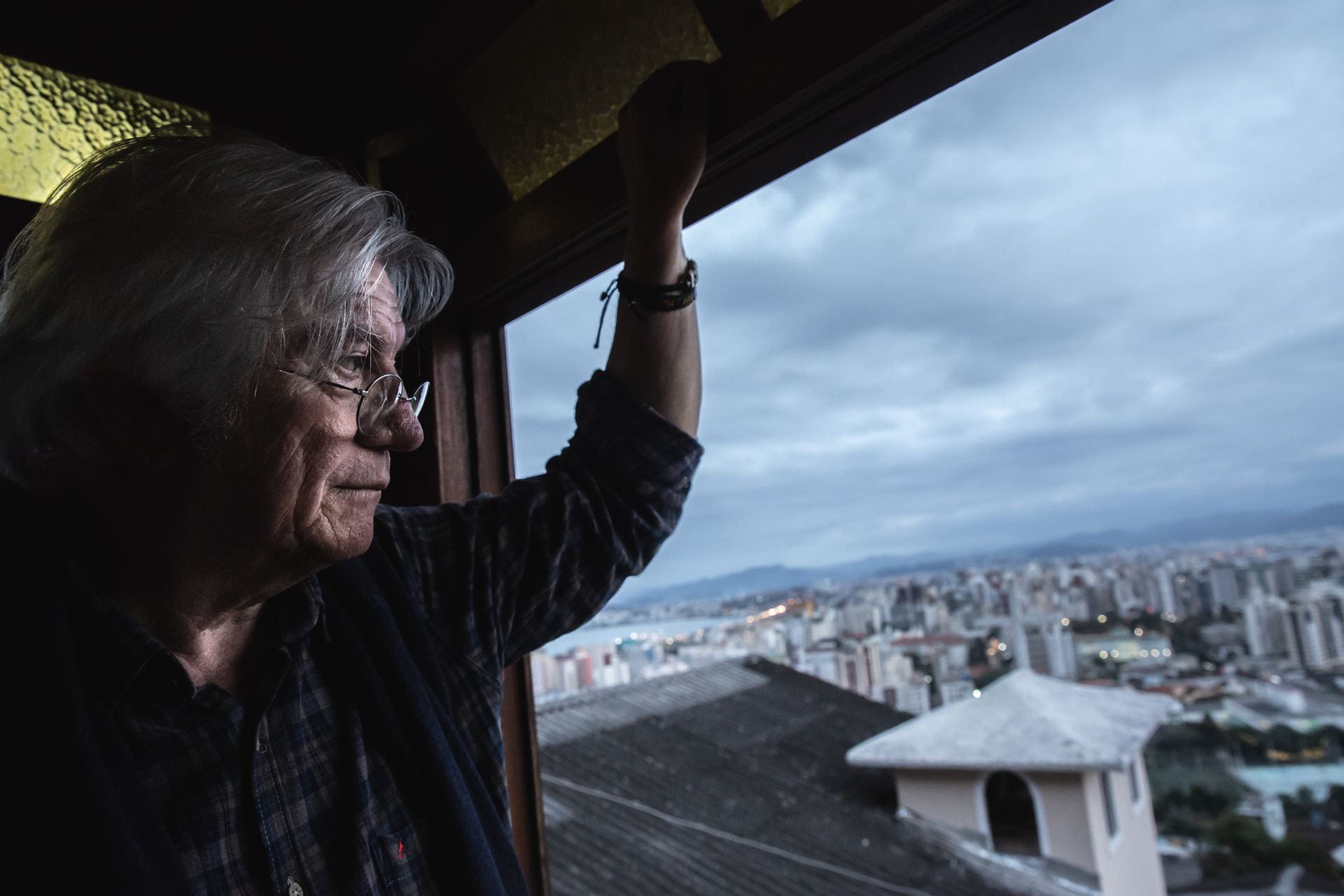
Fr. Vilson Groh overlooking the community of Monte Serrat where he lives, and the city centre of Floripa. Photo credit: Marco Favero NSC
From the beginning, the focus was on youth, education, and providing the economic opportunities that are so needed in the Brazilian urban periphery. This was achieved through elementary education for about 2,000 children, social and cultural events, professional skills workshops and support in finding employment, together with basic social support for very vulnerable families.
The pandemic and abrupt lockdowns starting in March 2020 forced a swift change, towards a focus on immediate social assistance. Brazil has extremely uneven governmental and social welfare networks, and the most vulnerable have great difficulty in accessing meagre emergency government assistance. In 2020, more than 70 million people—a third of Brazil—received at least one government emergency aid payment of 600 reais, or about US$120.
The Vilson Groh Institute stepped into the breach, distributing more than 13,000 food baskets (known as a cesta básica, a set of basic goods that can feed a family for a month) and community cash aid to almost 2,000 families during the pandemic. Vilson Groh himself was the only staff member to catch Covid-19 in 2020, as he repeatedly put himself on the line responding to requests for help, or holding mass.
The Institute, though, has a much more ambitious vision for the future, one that was partly delayed by the pandemic, but with which I became enamored.
Big plans
Floripa is mostly known as a tourist destination, thanks to its lush, forest-covered hills and beautiful beaches. But roughly two decades ago, a robust software and technology sector started to develop. The city’s high quality of life and the technical training provided by public universities and public technical schools—both of which I attended—act as catalysts for the tech sector.
This context makes the city’s social inequality all the more jarring—a tourist destination, seat of the state government, with good higher education and a growing technology industry, where a tenth of the population lives in urban misery. Fifty thousand people live in a situation where they are exposed to extreme violence and drug trafficking, and are unable to access basic services or live with a modicum of dignity. As is common in Brazil, these realities are dramatically, physically juxtaposed—affluence and misery separated by a few blocks and a private security detail.
Throughout its history Brazil has been riven by a massive social gulf. Philosopher Roberto Mangabeira Unger, a former minister of strategic affairs of Brazil, has described the modern division of the country into parallel societies as “Brazil 1 and Brazil 2”.
Brazil 1 is rich, politically influential and benefits from access to reasonably functional government services and institutions. The realities of Brazil 1 are those of the middle class in developed countries.
Brazil 2 is poor, forgotten and relegated to poverty, unable to access government services and institutions. The urban realities of Brazil 2 are seen in the favelas: shantytowns with families living in shacks, often without plumbing, access to formal services, or regular paychecks. These marginalized communities are in many cases ruled by drug lords, and drug trafficking is frequently seen as the only viable employment prospect, with youth often induced into the business—hence the common sight of kids toting guns.
More than two out of every five workers in Brazil are “informal”, which means they have no formal labor contract for the jobs they perform. Informal workers are invisible to the government when it comes to taxes, labor protection, and unemployment safety nets. Informality—being invisible to the existing system—is the hallmark of Brazil 2.
By witnessing and living the reality of these contrasts in Floripa— the demands of a growing knowledge-based economy and the day-to-day reality of marginalized communities—the Vilson Groh Institute gradually expanded its vision, tempered by forty years of experience in knowing what works and what does not.
Now, the Institute’s goal is to create five social innovation centers to serve as hubs for their communities, thereby reinventing these places’ image. The first one is slated to be completed by November 2022, strategically placed at the top of Monte Serrat hill, the community where Vilson Groh himself lives. These social innovation centers are designed to provide workshops, makerspaces, computer labs, music studios, libraries and teaching spaces, and to host an ambitious complementary education program running in alternate shifts to public schools (in Brazil, classes take place in two shifts, either in the mornings or afternoons). Launching such an ambitious proposal takes a leap of faith, and the program is aptly named Pode Crer, or “We Believe.”

A gathering of volunteers in 2017 for one of the Institute’s projects, Monte Serrat Cor, to paint and beautify public spaces in the community
This vision for an alternative path, suggesting a tangible solution to the thorniest problems of Brazilian society through civic and technological education, social and economic inclusion, and a shared set of values, immediately won me over. I naturally have a strong affinity towards education and technology, but being familiar with the Institute’s previous educational programs, it was clear to me that their knowhow meant this project could really succeed. It requires a deep knowledge of your community and your students, tailoring your approach as you go, learning about each person’s background, talents and desires, while growing ties with the rest of society.
Pode Crer was envisioned to accompany children from early childhood to university age. The core educational component consists of three pillars. First, civics and community, emphasizing participation in one’s local area and community improvement projects. Second, technology education, with a focus on computer literacy, programming, electronics, innovation and maker culture. Third, communication and expression, centred on verbal and written communication skills, and English as a second language. These three tracks are complemented by workshops in areas such as arts, music, and gastronomy, and practical topics like managing personal finances or starting and marketing a small business.
Despite being delayed by the pandemic, the Pode Crer pilot education program finally began in March 2021, with 320 young people in three age groups running from 11 to 24. One of the aims of the pilot is to understand the participants’ profiles so as to better tailor future iterations, adapting to their needs and aspirations. Helping prepare older students for a first job is another of its objectives—a challenging task due to their highly heterogeneous backgrounds, with many coming from extremely deprived households. To add to the challenge, due to social distancing restrictions, the pilot had to be implemented in hybrid format, despite many participants not having access to a computer or even a phone at home.
Despite these challenges, Pode Crer’s impact is already visible, and has received candid, positive testimonials from parents and students. One teenager I spoke with told me, “the program has been great, I learned a lot of things and, you know, before it started I was just spending all my free time on the street like a tramp, now we’ve been learning about finance and all these things, and I really hope we get more of the technology classes soon.”
This may be what a genuinely effective institution looks like, boasting a track record of improving some of the toughest problems in Brazilian society—not overnight, but through years of consistent and thoughtful work. The community of Monte Serrat is no longer dominated by drug lords; it is run by the community. Several other communities are benefitting from the same approach, one based not on an idea of what works on paper, on what should be done, but on real-life experience, rooting out violence, crime and drug trafficking, and replacing it with effective community ties. The pilot program was put together by leveraging partnerships with the private sector, civil society, and parts of government—all of which compelled me to become involved.
A significant part of the Institute’s income comes from small donations. Most Brazilians do not have a lot of spare income and there is no strong culture of philanthropy among the rich. Despite its successes, I was shocked to discover the Institute had absolutely no material available in English. These numerous case studies of lasting impact and human transformation were not being communicated broadly enough, reaching only a local Brazilian audience. What interest and support would be forthcoming if this story could be communicated internationally, and especially to the United States? In what seems like an inversion of the situation in the US, the Vilson Groh Institute can rely on hundreds of volunteers, but has to make major efforts just to raise meagre funds.
In the immediate term, financial support for the Pode Crer program was required, which was launched on a shoestring budget. Though the program itself is completely free, the overwhelming majority of the students are from very low-income households, and without financial aid most students would have to choose between helping their family earn extra income and focusing on their studies. The monthly support required may sound like a pittance to a US audience: 250 reais (US$45), adjusted down from an initial goal of 650 reais (US$130)—a figure deemed infeasible after the main institutional partner, a Brazilian bank, severely reduced its support as the economic situation deteriorated during the pandemic.

A visit of Pode Crer students to ACATE, the Santa Catarina Association of Technology Companies (https://www.acate.com.br/en/institutional/), where they are being matched with potential employers and internships.
Nevertheless, the Institute continued with its plans, aiming to fundraise locally while holding off on providing financial aid to students until after an assessment period in April. This enabled them to focus on the students that most needed support and who showed commitment to the classes. This uncertainty and sense of urgency spurred me on to create a crowdfunding campaign to raise enough to provide support to about 20 students who were already identified as particularly vulnerable.
One of the biggest lessons from the campaign was how generous a society the United States is. I reached out to several friends and acquaintances with a brief message about our campaign, and often the immediate reaction was a donation of several hundred dollars to a cause that was completely new to them. This is thanks in part to a long culture of philanthropy, supported by considerable tax incentives for charitable donations—something absent in Brazil.
Soon after the crowdfunding campaign ended, the family house where I grew up, which had been on the market for several years, was sold. Now I was faced with a sudden and sizable influx of money I had not counted on, but which could be used to quickly and decisively resolve some of Pode Crer’s funding issues. After brief discussions, I decided to donate half of it towards teachers’ salaries, student financial aid, educational robotics kits, for equipping a computer lab, and setting up a 3D printing lab.
With the other half we set up a fund in the US. Nonprofit organizations with a 501(c)3 classification can receive tax deductible donations on behalf of other projects or organizations—a process called fiscal sponsorship—allowing funds to be sent to foreign organizations. All that is needed is a suitable fiscal sponsor, which I found in the BrazilFoundation, a 501(c)3 established in 2000 by Leona Forman to fundraise and support Brazilian organizations and projects. After a few emails and a video call, we filed the paperwork and set up a designated fund on behalf of the Vilson Groh Institute.
We are now working on setting up a good bilingual website with a campaign focused on the Pode Crer vision. The goal is to open the first of the five Social Innovation Centers by November 2022, enabling future iterations of Pode Crer to enjoy much better infrastructure. As the program develops, it will be necessary to assess, refine and iterate on its implementation to ensure it continues to be effective, but the signs are encouraging. Judging from the early results of the Pode Crer pilot classes this year, I’m confident that the first social innovation center will catalyze enough visible change to convince even the most diehard skeptics, with the other four centers following in due course.

A rendering of the proposed design of the first social innovation center, to be built on Monte Serrat
A new knowledge economy
Roberto Mangabeira Unger, in his 2019 book, The Knowledge Economy, describes the need for the creation of a knowledge and creative economy that is broad and inclusive. This would be a substantial break with current reality, where the knowledge economy is composed of a small elite of highly trained workers. Mangabeira Unger is acutely aware of the Brazilian situation, with many of his ideas and proposals being developed with the Brazilian context in mind. He stresses the importance of the participation of US society, companies, universities and social organizations in training Brazil’s “productive apparatus.” This new kind of economic and social reality is the vision that the Vilson Groh Institute has organically conceived and is successfully realizing. Hence my ambition to help them tell this story and strengthen ties between Brazilian and US societies.
“Brazil is the country most like America in the world,” is something Mangabeira Unger often says: two continent-sized countries, founded in a land of plenty through colonialist European immigration, fostering multi-ethnic societies facing the deep challenge of inequality and the legacies of slavery. As well as these marked parallels, the countries have much goodwill and respect towards one another; both would surely stand to benefit from strengthening mutual ties and learning how to navigate their shared challenges.
Indeed, political scientist Robert Putnam has arrived at a similar diagnosis, having for decades warned that the United States would become a two-tier society. Putnam ascribes this to the fraying of social safety nets across the country, affecting primarily the lower class, with a consistent decline in living standards. The portrait he paints of communities fractured by drug addiction, violence, child abuse, and unstable families marred by economic uncertainty looks a lot like Brazil’s urban misery. The United States made great strides towards racial integration, yet now sleepwalks into a two-tier society via socio-economic inequality.
Putnam’s proposed solutions to these challenges bear a striking resemblance to what the Vilson Groh Institute has developed for tackling long-standing, mass marginalization in Brazil: the expansion of education to encompass more than just technical training, to foster and strengthen a civic mindset and a shared set of community values, and to provide a safety net for youth that fall through the cracks of their families, communities and governments.
The question then is, can the approach demonstrated by the Vilson Groh Institute be scaled up? Creating a handful of social innovation centers and managing them effectively is one thing, but how about twenty, a hundred, a thousand centers? Brazil has 211 million people and the “third sector” is not nearly as organized as it is in the United States, meaning there is certainly room for such a project. But does success require a figure as formidable as Vilson Groh? Or is there a recipe that can be robustly replicated elsewhere?
What I see the Vilson Groh Institute doing genuinely fills me with hope that the most ingrained social problems in Brazil can be effectively resolved by empowered communities and local initiatives. Though addressing these challenges is often thought of as strictly the government’s responsibility, despite much improvement over the last century, it is unrealistic to expect that the Brazilian state will fully meet these challenges anytime sooner than a decade or two. Strengthening civil society is the surest way for Brazil to address its own challenges faster. I want to help the incredible people at the Vilson Groh Institute to do as much as possible, and I want to figure out if the most essential elements of this recipe can be replicated. Because if they can, the potential for change goes far beyond Floripa’s sunny shores, and even beyond Brazil.
Acknowledgements: This story is the result of many conversations with those directly engaged in turning this vision into a new reality, and whom I am very happy to be able to support and to help share the reality that they know so well. I would like acknowledge in particular the following people from the Vilson Groh Institute: Luciêni Braun (executive director), Priscila Souza (fundraising director), Lucano de Brito (communications), Tainara Lemos (educator and director of Pode Crer) and of course Fr. Vilson Groh himself. I would also like to thank my friends who reviewed and commented on this article: Alex Mitchell, Brener Martins, Michael Zhang, Austin Liu and Alex. Finally, I want to thank Caltech and in particular my advisor Paul Sternberg for affording me the support and intellectual liberty to contemplate issues well beyond science.
More Student Views
Weapons of Mass Construction: Building a Puerto Rico for the People
I zip up my raincoat and turn on my headlamp as we tread along a damp trail in El Yunque National Rainforest, Puerto Rico.
Climbing the Tepozteco: Meditations on Mexico
English + Español
With sweat trickling down my forehead, I meditated on the question: What does motivation look like?
Cultivating Resilience in Puerto Rico: Harvesting Fields of Change
As a born and raised Puerto Rican, my journey has always been intertwined with my homeland’s vibrant hues and resilient spirit.

